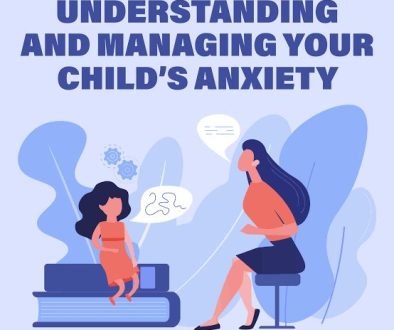Attention-Deficit/Hyperactivity Disorder (ADHD)
Attention-Deficit/Hyperactivity Disorder (ADHD) is a common neurodevelopmental disorder characterized by persistent patterns of inattention, hyperactivity, and impulsivity that interfere with daily functioning. Though often diagnosed in childhood, ADHD can persist into adolescence and adulthood, affecting many aspects of life, including school, work, and relationships. While ADHD presents differently in each individual, early recognition and treatment can help manage symptoms and improve quality of life.
Understanding ADHD
ADHD is typically divided into three types based on predominant symptoms:
1. Predominantly Inattentive Presentation: Individuals with this type primarily struggle with inattentiveness. They may find it hard to pay attention to details, often make careless mistakes, and are easily distracted.
2. Predominantly Hyperactive-Impulsive Presentation: People with this type display hyperactive and impulsive behaviors, such as fidgeting, talking excessively, or acting without considering consequences.
3. Combined Presentation: This is the most common type, where individuals experience both inattentive and hyperactive-impulsive symptoms.
Each of these presentations affects daily life differently. For instance, while inattentiveness might lead to academic or work challenges, hyperactivity may make it difficult for individuals to stay seated or focused.
Symptoms of ADHD
ADHD symptoms vary in severity and can change over time, but they generally fall into two main categories: inattention and hyperactivity-impulsivity.
– Inattention: Signs include difficulty sustaining attention, frequent careless mistakes, forgetfulness in daily tasks, and trouble organizing activities or belongings.
– Hyperactivity and impulsivity: Symptoms include fidgeting, restlessness, excessive talking, difficulty waiting for turns, and impulsive decisions without considering potential consequences.
Diagnosis of ADHD
Diagnosing ADHD involves a comprehensive evaluation, typically conducted by a healthcare provider such as a psychiatrist or psychologist. The diagnosis is often based on a combination of direct observations, self-reports or parental observations, and standardized rating scales. The criteria for ADHD, outlined in the Diagnostic and Statistical Manual of Mental Disorders (DSM-5), specify that symptoms should be present for at least six months, begin before the age of 12, and cause difficulties in multiple areas of life.
Causes and Risk Factors
The exact causes of ADHD are not fully understood, though a combination of genetic, neurological, and environmental factors is thought to play a role.
– Genetics: ADHD often runs in families, suggesting a strong genetic component. Individuals with close family members who have ADHD are at a higher risk.
– Brain structure and function: Research has shown that people with ADHD may have differences in certain brain areas, including regions related to attention and impulse control.
– Environmental factors: Prenatal exposure to toxins, lead exposure in early childhood, and low birth weight have been associated with an increased risk of developing ADHD.
Treatment and Management of ADHD
There is no cure for ADHD, but treatment options can help manage symptoms and improve functioning. Treatment plans are often tailored to individual needs and may include:
– Medication: Stimulants such as methylphenidate and amphetamine are the most common medications prescribed for ADHD. These medications can help increase attention and reduce hyperactive and impulsive behaviors. Non-stimulant medications may also be effective, particularly if stimulants are not well-tolerated.
– Behavioral therapy: This form of therapy can help individuals with ADHD develop coping strategies, improve time management skills, and reduce disruptive behaviors. Behavioral therapy is particularly helpful for children with ADHD and may involve parental training to support the child’s development.
– Education and support: Learning about ADHD and connecting with support groups can help individuals and families better understand the disorder and develop effective strategies for managing it.
Living with ADHD
ADHD can significantly impact various aspects of life, including academics, work, and personal relationships. Children with ADHD may struggle in school, facing challenges in following instructions, staying organized, and completing tasks. For adults, ADHD may lead to difficulties with time management, prioritization, and impulse control, affecting career performance and interpersonal relationships.
Despite these challenges, many people with ADHD have unique strengths, such as creativity, high energy levels, and the ability to think outside the box. With the right support and management strategies, individuals with ADHD can harness these strengths and lead fulfilling lives.
Conclusion
Attention-Deficit/Hyperactivity Disorder is a complex and often misunderstood condition that affects people of all ages. While ADHD presents unique challenges, early diagnosis and intervention can make a significant difference. Through a combination of medication, therapy, and support, individuals with ADHD can manage their symptoms and capitalize on their strengths. Greater awareness and understanding of ADHD can further empower those affected to achieve their full potential.



